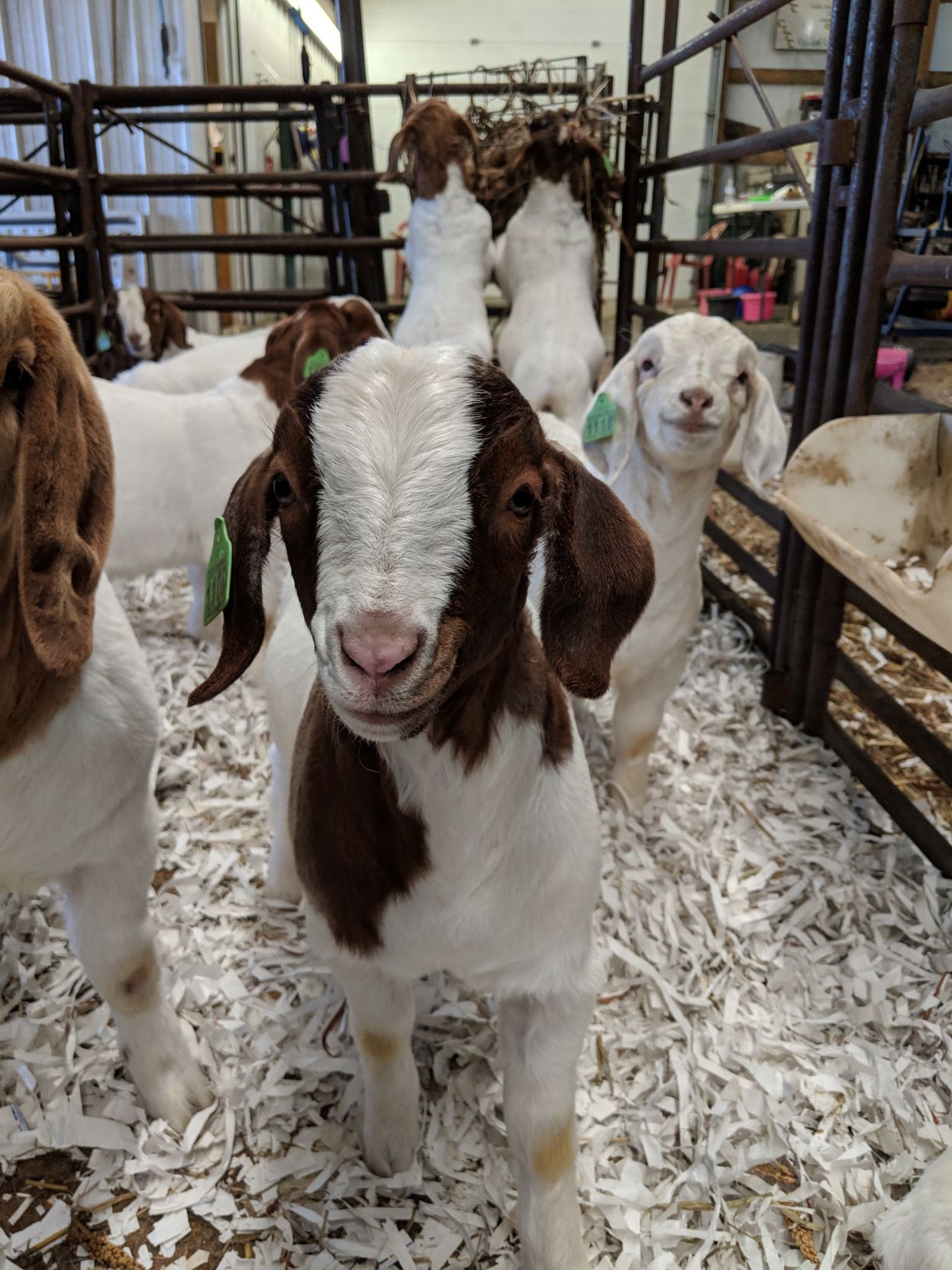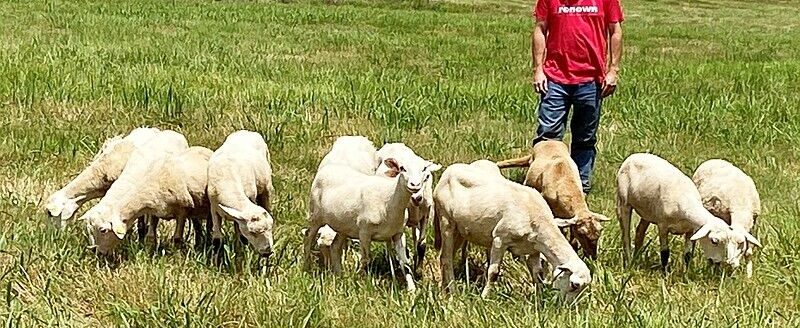Meat goats gain pounds and popularity

Meat goats are not the same swaybacked critters you may have seen on Saturday morning cartoons or, if you’re like me, on the roof of your aunt’s Toyota Camry. They are square-topped protein producers that are considered a delicacy by some cultures and have a growing segment of United States consumers declaring goat their favorite red meat.
The Boer breed is the most popular meat goat and one of the easiest to recognize due to its white with brown markings. Much as the cattle industry aims to put more pounds on the hoof, so does the meat goat industry.
As a third generation cattle and sheep raiser, Lisa Kimsey of Bighorn Basin Boers, Manderson, Wyoming, has heard arguments against goats from all sides. Adding goats helped their operation evolve and utilize their existing sheep-based infrastructure, including herders and guard dogs.
Kimsey wants her goats to be self-sufficient and keeps that in mind when selecting her breeding stock.
Boers and beauties
Commercial producers sometimes crossbreed Boers to help them perform better in their environment. Kimsey runs full Boers as well as composite goats, meaning they are a percentage of Boer as well as a percentage of Spanish and Angora breeds.
On her high desert operation, temperatures range from the 100s to minus 30. An undercoat, called cashmere, is a hereditary trait essential to withstanding temperature drops. In addition to cashmere production, Kimsey’s stock has solid mothering abilities, good feet and sturdy bones to traverse the terrain. Her goal is to produce an animal that doesn’t need coddling.
In contrast to the commercial side of the meat goat industry stands the show side. This is a newer industry in the High Plains when compared to show cattle. While muscle production is still a priority, the physical appearance of an animal is given heavy consideration.
Derrick Brown’s family started Masterpiece Genetics, Wellington, Colorado, because of a 4-H program his sister participated in 10 years ago. His sister caught a goat and his dad decided they might as well buy some more goats to go along with it. They now raise their own does and lease bucks for breeding. Their flock includes 70 mature does and 25 to 30 yearlings.
“We make decisions based on phenotype were as a commercial guy would look at production,” Brown said. “We give up some production to make a prettier goat.”
Feeding a stereotype
Brown would like to clear up one common misconception about goats’ eating habits.
“Goats do not eat garbage,” he said. “They are actually very picky.”
The Saturday morning cartoons of our youth convinced us that goats eat tin cans and womens’ sunbonnets. Thus the myth that goats are walking garbage disposals was born.
Brown feeds his goats a commercially produced ration, but goats on native forage prefer browse, which is the leaves and twigs of shrubs, woody vines and trees. They also eat the seed heads off grasses.
Many cattlemen dismiss the idea of running cattle and goats together. Those willing to take the leap find improvement in the quality of their rangeland. Cattle will eat the rougher forage and goats will eat everything else.
“You can get more production out of an acre because a cow will eat different than a sheep, a sheep will eat different than a goat and a goat eats different than the other two,” Kimsey said. “You can strike a really good natural balance on your rate.”
She also pointed out that in our early history the bison, elk and deer were far more numerous and still had plenty of forages to survive because they all ate different plant varieties.
Time to eat
For some variety is the spice of life, but for a percentage of the population, eating goat has never been a consideration. Those involved in the meat goat industry say there is not much difference between them and any other meat animal. Kimsey says that from a nutritional viewpoint goat meat is not fatty but is still tender.
Goat is a staple in Hispanic and Middle Eastern cultures especially for holidays and celebrations. Where beef packing plants have strict requirements for carcass weight and size, there is no packer-determined end point for goats.
“That’s the beauty of it,” Kimsey said, adding that finished weight depends on the religion or holiday being observed. “The consumer is boss in this.”
Processing a smaller animal costs less and requires less freezer space. Of the cultures that favor goat meat, many will serve the animal whole. The logistics of cooking an entire goat are much more manageable than with other meat animals.
Kimsey does not market meat but sells live animals to customers in Texas, Colorado and on the East Coast. The most popular cooking method, based on producers’ input, was wood smoking or barbecuing. All agreed that they love it and the flexibility it offers.
Is it the cute factor that keeps some from eating goat meat? Does the garbage disposal image make us think the meat will be tough and stringy? Kimsey says once you take away any preconceived notions, people truly enjoy eating goat meat.
Jennifer Theurer can be reached at 620-227-1858 or [email protected].



